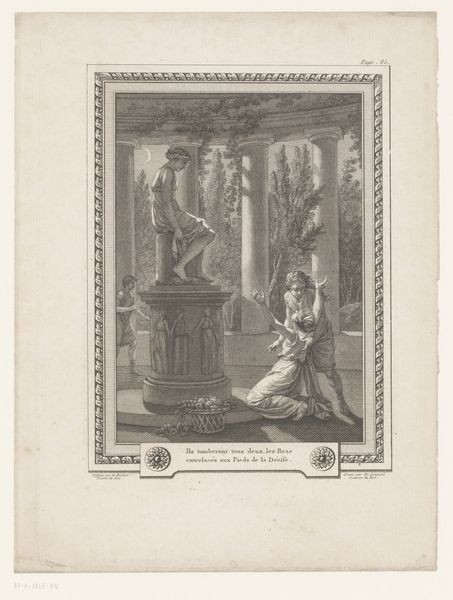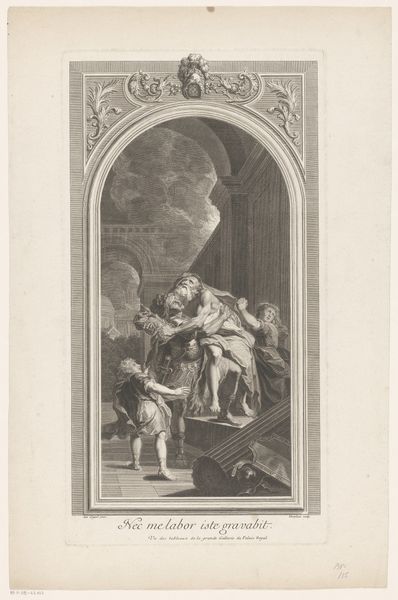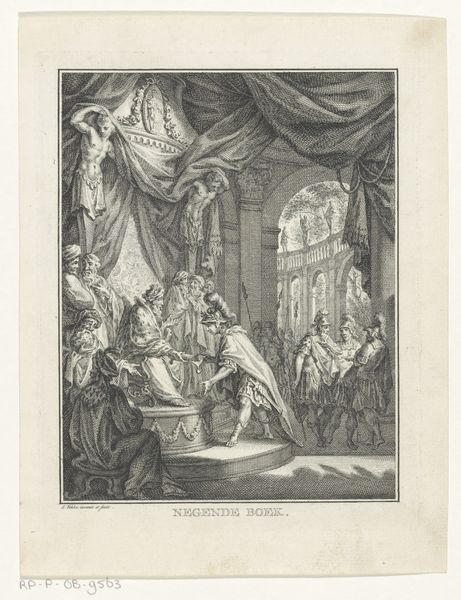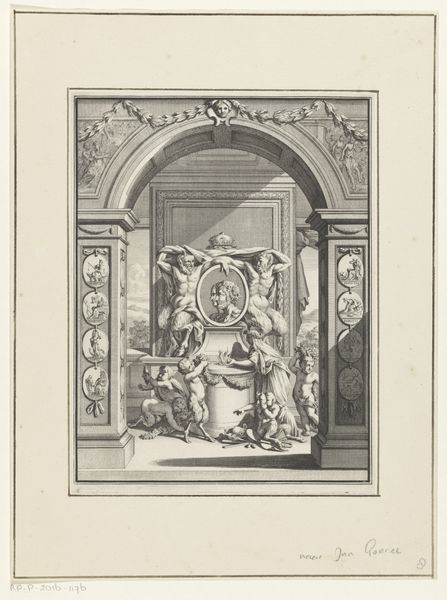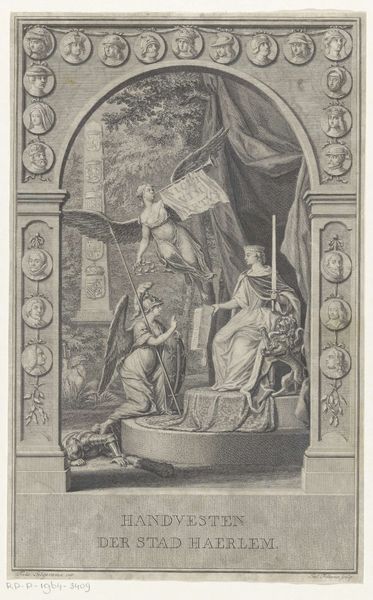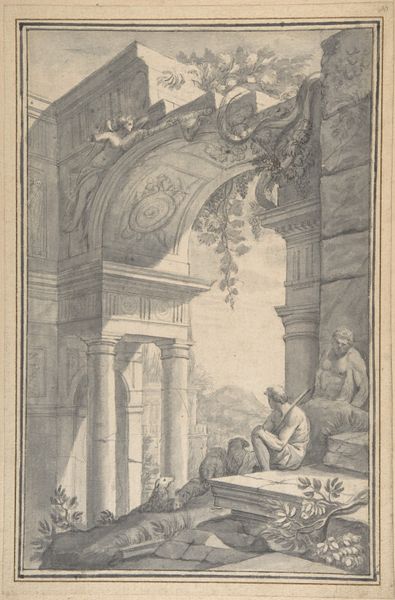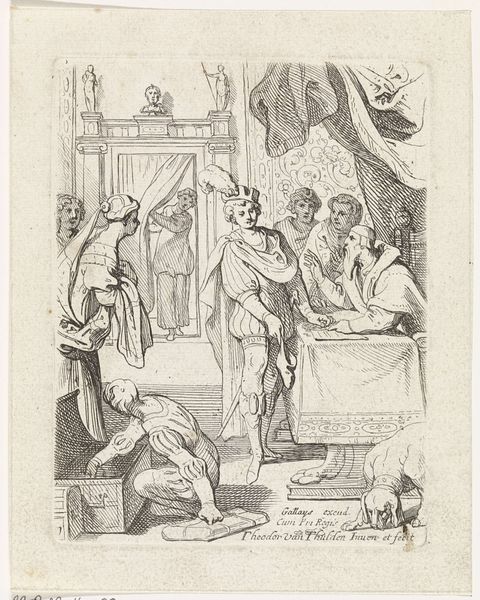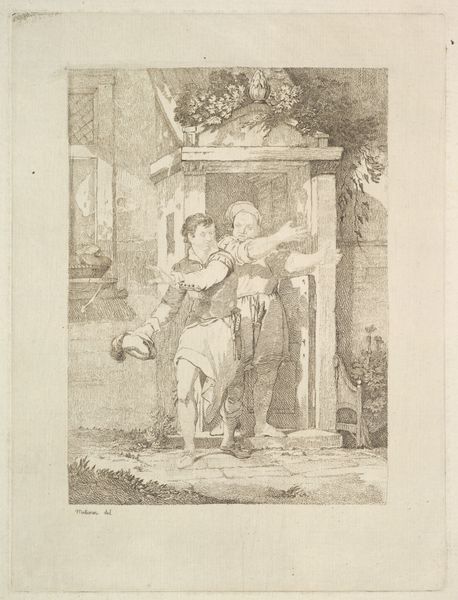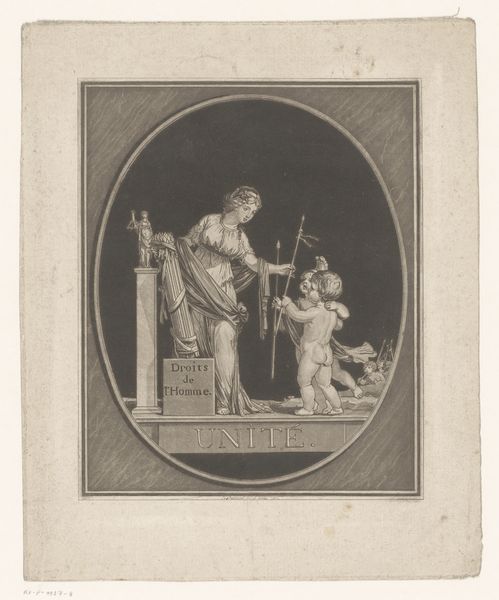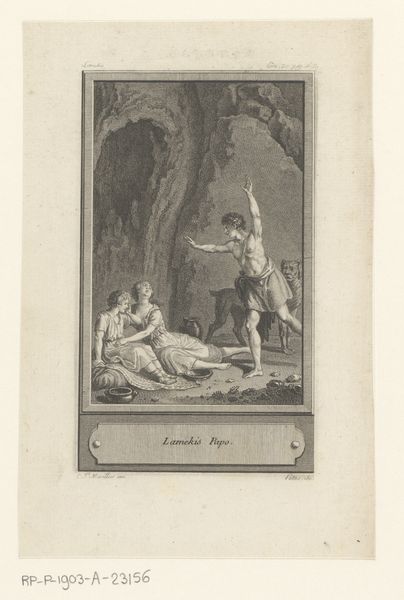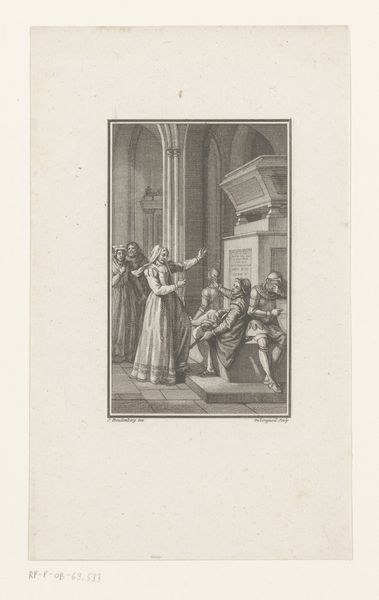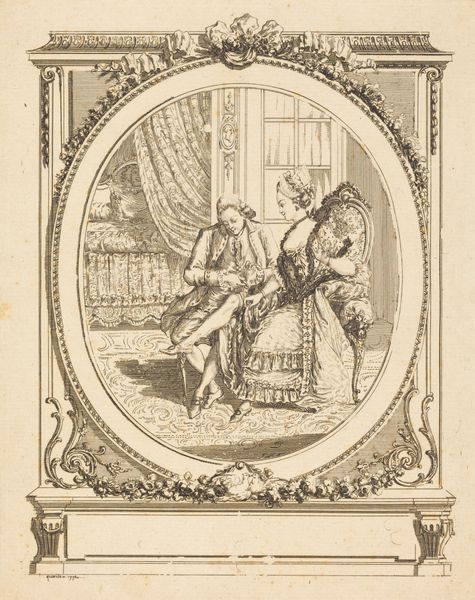
drawing, print, pencil
#
portrait
#
drawing
#
neoclacissism
#
allegory
# print
#
pencil sketch
#
landscape
#
pencil
#
pencil work
Dimensions: height 495 mm, width 285 mm
Copyright: Rijks Museum: Open Domain
Curator: This pencil drawing from 1828 is entitled "Graf van Jan Scharp." It's housed here at the Rijksmuseum, depicting the tomb of Jan Scharp, a prominent figure of his time. What are your first thoughts? Editor: My first thought is one of quiet solemnity. The limited palette—only pencil—underscores a contemplative mood. There’s a structural dichotomy, though: clear lines and carefully planned neoclassical setting conflicting with swirling clouds and veiled figures. Curator: Yes, there's a tension isn't there? Neoclassicism sought order, yet grief is rarely orderly. The figures—weeping women—embody this tension. In symbolic terms, their posture tells us about their distress. The figures remind of Greek muses mourning an untimely demise. Editor: Interesting take. I was struck by the way light and shadow emphasize depth, almost like a stage set. The linear hatching mimics texture, stone, drapery. The figures flank the tomb symmetrically; very formal but offset with curving contours in the architecture. Curator: The architectural choices were intentional, as was this allegory. Jan Scharp held progressive religious beliefs, hinted through iconography that blends old and new: one side bears the sacred heart, and the other holds the Chi-Rho monogram—symbols that unite Catholicism and the Reformed church. This hints at theological evolution, bridging epochs. Editor: The subtle merging, you’re right. It’s visually echoed by the gothic arches—their curved shapes offset the severity of the two obelisks placed symmetrically on either side of the chapel. I am curious as to why the composition is split in half. Curator: I feel it serves two purposes: to visually create opposing ideals clashing; tradition versus progression and darkness versus light. Grief is depicted differently between each woman and its hard to grasp the intention here. Editor: So, from a formal view, these carefully rendered components are about loss, memory, and philosophical weight… Curator: Ultimately, it serves as cultural record, inviting us to consider how societies evolve. What memories we decide to conserve, and how grief gets memorialized with the passing of a public figure. Editor: A melancholic scene composed in monochrome with allegorical intention... there's a quiet dignity in its making that makes you reflect on mortality and artistic means.
Comments
No comments
Be the first to comment and join the conversation on the ultimate creative platform.
